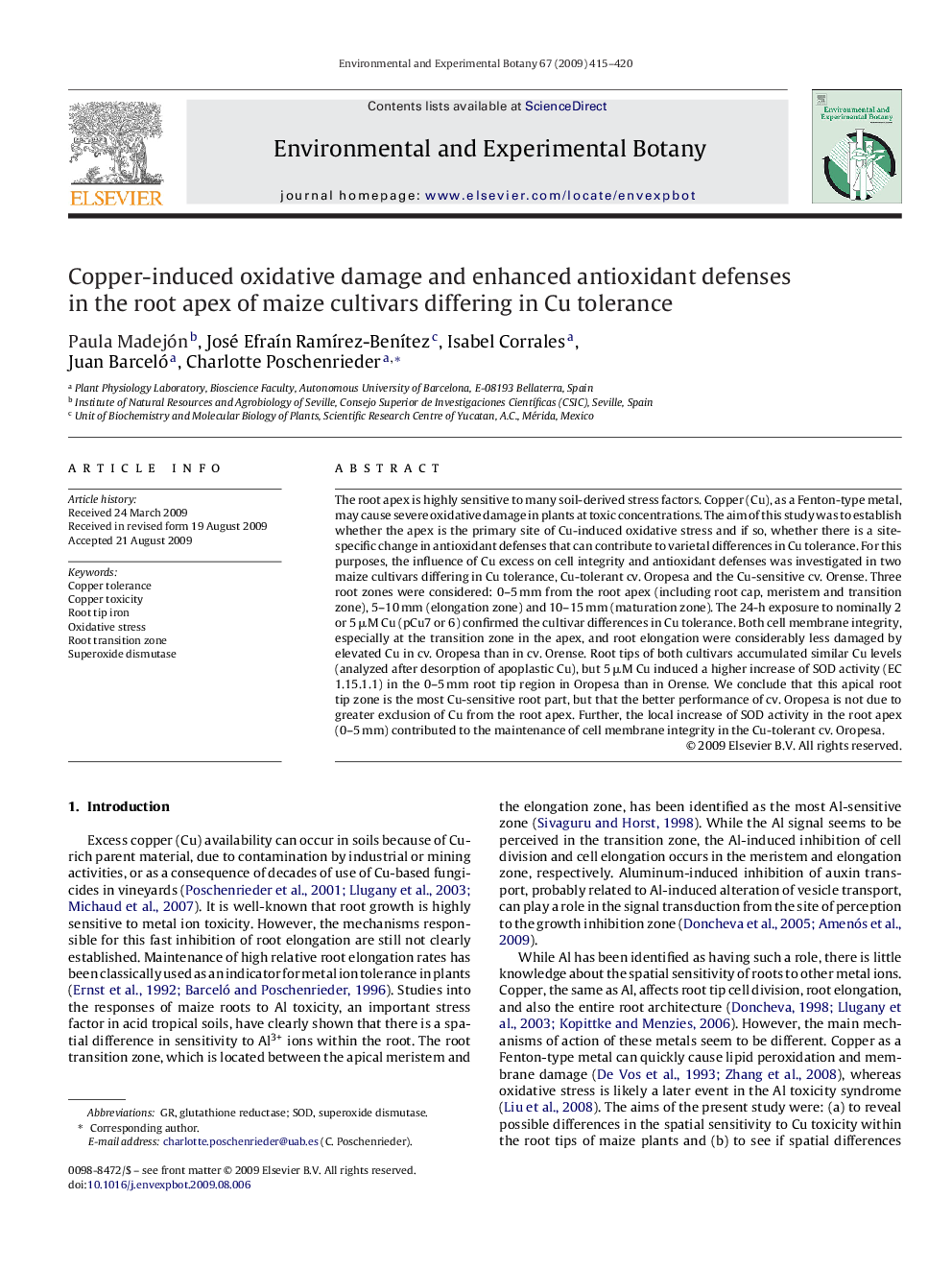| Article ID | Journal | Published Year | Pages | File Type |
|---|---|---|---|---|
| 4554977 | Environmental and Experimental Botany | 2009 | 6 Pages |
The root apex is highly sensitive to many soil-derived stress factors. Copper (Cu), as a Fenton-type metal, may cause severe oxidative damage in plants at toxic concentrations. The aim of this study was to establish whether the apex is the primary site of Cu-induced oxidative stress and if so, whether there is a site-specific change in antioxidant defenses that can contribute to varietal differences in Cu tolerance. For this purposes, the influence of Cu excess on cell integrity and antioxidant defenses was investigated in two maize cultivars differing in Cu tolerance, Cu-tolerant cv. Oropesa and the Cu-sensitive cv. Orense. Three root zones were considered: 0–5 mm from the root apex (including root cap, meristem and transition zone), 5–10 mm (elongation zone) and 10–15 mm (maturation zone). The 24-h exposure to nominally 2 or 5 μM Cu (pCu7 or 6) confirmed the cultivar differences in Cu tolerance. Both cell membrane integrity, especially at the transition zone in the apex, and root elongation were considerably less damaged by elevated Cu in cv. Oropesa than in cv. Orense. Root tips of both cultivars accumulated similar Cu levels (analyzed after desorption of apoplastic Cu), but 5 μM Cu induced a higher increase of SOD activity (EC 1.15.1.1) in the 0–5 mm root tip region in Oropesa than in Orense. We conclude that this apical root tip zone is the most Cu-sensitive root part, but that the better performance of cv. Oropesa is not due to greater exclusion of Cu from the root apex. Further, the local increase of SOD activity in the root apex (0–5 mm) contributed to the maintenance of cell membrane integrity in the Cu-tolerant cv. Oropesa.
